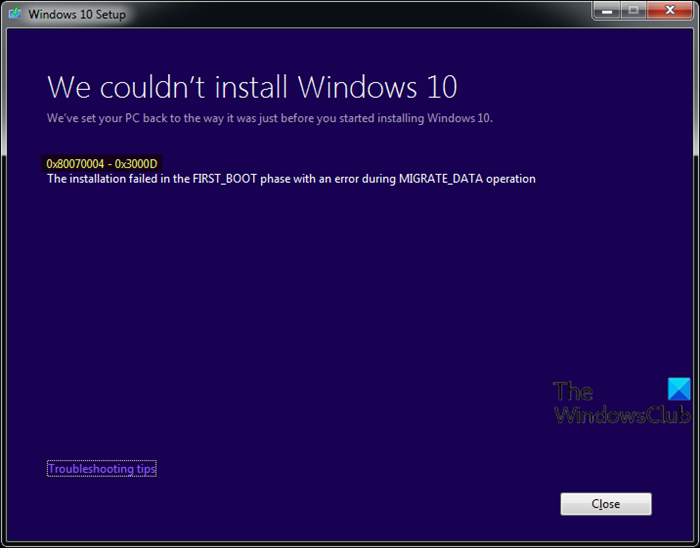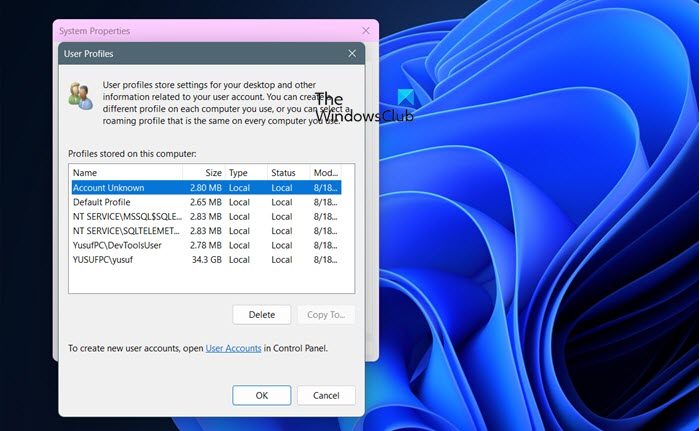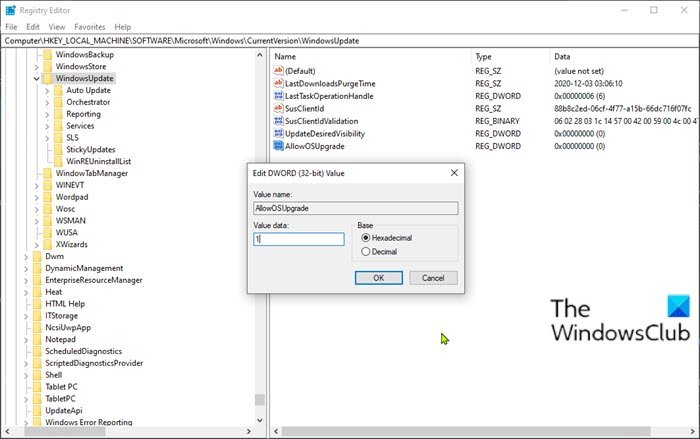When upgrading to the latest version of Windows 11/10, some users encounter error 0x80070004 – 0x3000D. This error appears when using the Media Creation tool and intending to keep the apps and files intact. In this post, we will see how what you can do if you see 0x80070004 – 0x3000D, The installation failed with an error during the MIGRATE_DATA operation

When you encounter this issue. you’ll receive the following full error message;
Windows 11/10 Setup
We couldn’t install Windows 11/10
We’ve set your PC back to the way it was just before you started installing Windows 11/10.0x80070004 – 0x3000D
The installation failed in the FIRST_BOOT phase with an error during MIGRATE_DATA operation
When you encounter this error, the installation will stop at a certain percentage and fail repeatedly whenever you try. Most
Windows 11/10 Upgrade install error 0x80070004 – 0x3000D
If you’re faced with this issue, you can try our recommended solutions below in no particular order and see if that helps to resolve the issue.
- Change Computer Name (if applicable)
- Verify the location of the Users folder and the state of User Profiles
- Create a new Administrator account
- Delete the file named TODO
- Create or Modify the AllowOSUpgrade registry key
- Directly download the Windows 11/10 ISO
- Clean install Windows 11/10.
Let’s take a look at the description of the process involved concerning each of the listed solutions.
1] Change Computer Name (if applicable)
If the any of the following is your computer name, you’re most likely to encounter the error 0x80070004 – 0x3000D while upgrading your computer to Windows 11/10:
- System (or SYSTEM)
- LOCAL
- SELF
- Network
These are reserved names and must not be used for Computer names. Hence you need to change the computer name in the Windows PC you are upgrading from.
If you’re still unable to upgrade after these changes, you can try the next solution.
2] Verify the location of Users folder and the state of User Profiles

It might be that the Users directory was moved or relocated and Windows 11/10 installer couldn’t find user profiles on the %systemdrive% i.e. where the current operating system is installed. This case is applicable to both Windows 7 and Windows 8.
If you had any changes or moved your folders of “Users”, “Program Data” or “Program files”, or user profiles of the operating system got corrupted, you may encounter this issue. Hence before upgrading to Windows 11/10, you’re required to re-install or reset/repair your current operating system.
However, if you’ve not moved any of your folders, your user profiles will likely be corrupted. So, rather than reinstalling Windows, you can check if your computer has any corrupt user profile. Here’s how:
- Press Windows key + R to invoke the Run dialog.
- In the Run dialog, type
sysdm.cpland hit Enter to open System Properties. - On the Advanced tab, click Settings button available under User Profiles section.
- Make a note of all your accounts on paper, sign out of your current user account, and try logging in to your accounts on your computer.
- If you encounter an error when logging in to any of the accounts, return to User Profiles and delete that account.
Once done, try the upgrade install again. If the issue persists, continue with the next solution.
3] Create a new Administrator account
This solution simply requires you to create a new administrator account or enable the inbuilt administrator account, then log into that account and perform the Windows 11/10 upgrade install from there.
4] Delete the file named TODO
If by any chance, you have Orbx (Microsoft Flight Simulator) program installed on your computer, then you need to delete the TODO file from the Orbx folder.
Do the following:
- Open up File Explorer or Windows Explorer and configure Windows 7/8 to show protected operating system files.
- Navigate to the following directory:
C:\Users\UserName\AppData\Roaming\Microsoft\Windows\Start Menu\Programs\Orbx
In the above path, C is the drive where Windows 7/8 is installed, and UserName is your account name.
- Under ORBX folder, check if there is a file called Todo. If the file exists, delete the file.
- Restart computer.
Retry the Windows 11/10 upgrade install. The process should be completed without any errors. Otherwise, proceed with the next solution.
5] Create or Modify the AllowOSUpgrade registry key

Since this is a registry operation, it is recommended that you back up the registry or create a system restore point as necessary precautionary measures. Once done, you can proceed as follows:
- Press Windows key + R to invoke the Run dialog.
- In the Run dialog box, type
regeditand hit Enter to open Registry Editor. - Navigate or jump to the registry key path below:
HKEY_LOCAL_MACHINE\SOFTWARE\Microsoft\Windows\CurrentVersion\WindowsUpdate- At the location, on the right pane, double-click the AllowOSUpgrade entry to edit its properties.
If the key is not available, right-click on the blank space on the right pane and then select New > DWORD (32-bit) Value. Rename the value name as AllowOSUpgrade and hit Enter.
- Double-click the newly created entry to edit its properties.
- Input 1 in the Value data field.
- Click OK to save changes.
- Restart your computer.
On boot, retry the Windows 11/10 upgrade install. If the issue is still unresolved, try the next solution.
6] Directly download the Windows 11/10 ISO
It’s possible that for some reason, using the Media Creation tool aka Windows Update Assistant might be causing this issue. In this case, you can directly download the Windows 11/10 ISO image file from the Microsoft website. Once you have downloaded the ISO to a location (preferably the desktop) on your device, double-click the ISO image to mount it as a virtual drive and then double-click the setup.exe file to start the in-place upgrade process.
Note: If you’re attempting the upgrade from Windows 7, you’ll need third-party virtual drive software to mount the ISO image.
Read: Error Code 8007001F – 0x3000D
7] Clean install Windows 11/10
If all fails, you can clean install Windows 11/10 on the device.
Read: Error Code 800704B8 – 0x3001A
What is error code 0x800707E7 on Windows 11 update?
Error 0x800707E7 means that the profile being moved doesn’t match the hardware. This usually happens after you restore a system using a third-party tool or a “customized” system from a different computer. We recommend you check our post to resolve 0x800707E7 – 0x3000D.
Also Read: Error Code 0xC1900101 – 0x30018
Leave a Reply